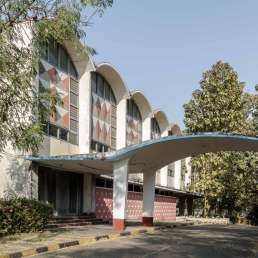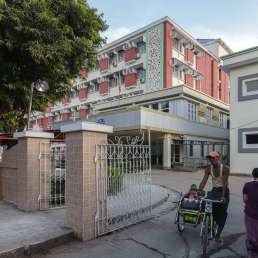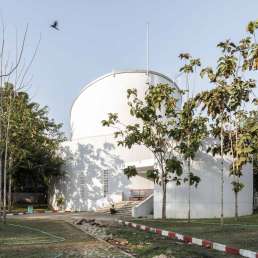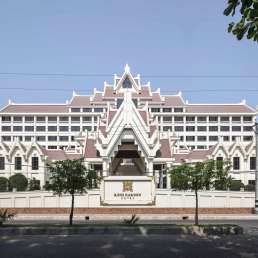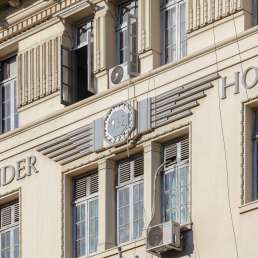Formerly: Lim Chin Tsong Palace
Address: 131 Kaba Aye Pagoda Road
Year built: 1915-1919
Architect: Clark & Greig (contractors)
The State Fine Arts School now uses the palace built by Lim Chin Tsong on Kaba Aye Pagoda Road. Lim Chin Tsong was perhaps Burma’s most famous pre-independence business tycoon. He led a flamboyant life, obvious in this eccentric five-storey residence with its wild mix of Chinese and Western architecture. The tall pagoda-like central tower rises above a main reception hall. The rooms are laid out in a star shape, reached by a central staircase. The balcony above the grand portico overlooks Yangon. In 1919, Lim Chin Tsong would have enjoyed a view stretching downtown all the way to the river. His family name is printed in Chinese above the balcony roof. A large teak wall divider, painted in red and gold and about 10 meters wide, separates the dome from the balcony area. Some of the walls feature large murals. These were painted by Dod and Ernest Procter in 1920, whom Chin Tsong met on a famous tour to London the year before. They mainly depict Chinese landscapes. As Sarah Rooney notes in her 30 Heritage Buildings of Yangon, these murals “are nicely executed but unremarkable, and contain no hint of the artistic talent the couple would exhibit in their later years”.
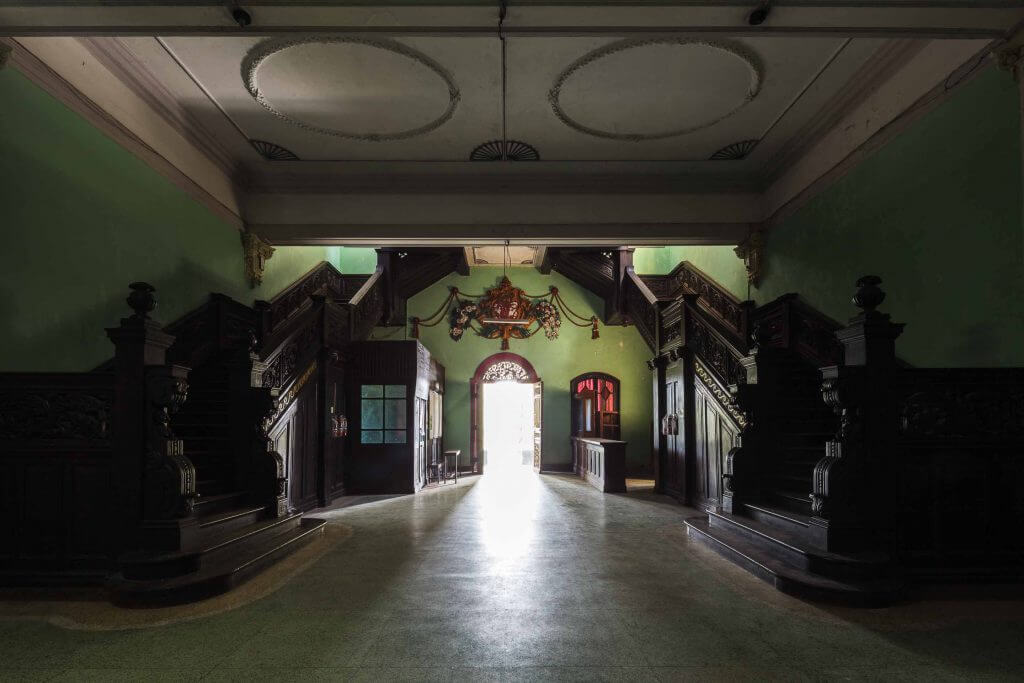
The interior was lavishly furnished and decorated. Allegedly Chin Tsong spent over 30,000 British pounds, or more than 1 million in today’s money, during a shopping spree at Harrods in London. The 1924 Seaports of the Far East (also quoted in Rooney’s book) described how
“the magnificence of [the house’s] equipment in rare and valuable furniture, in statuary, pictures, articles of gold, silver, ivory, curious of every description and in the richness and novelty of its electrical illumination, is in keeping with (…) the carving of the woodwork, the marble floors and staircases (…) and the greatness of the perspectives of halls, corridors and noble apartments, where the old and the new, the East and the West are expressed of a harmony that is remarkable and unique”.
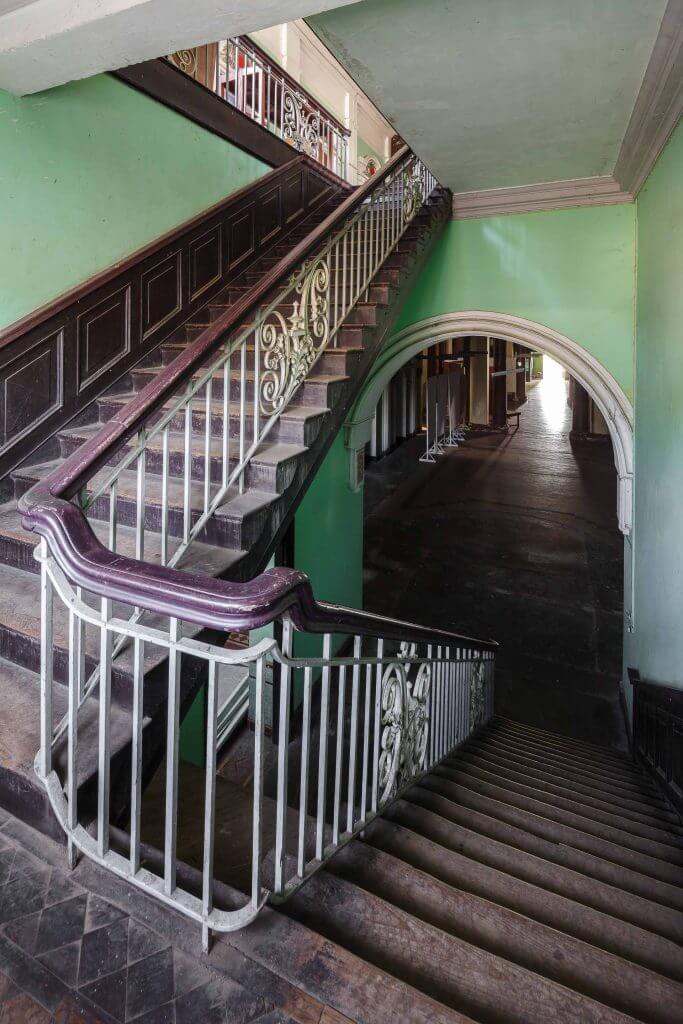
Born to Chinese Hokkien parents in Rangoon in 1867, Lim Chin Tsong took over his father’s rice trading business at the age of 21. Soon he would expand into many other sectors, most importantly oil. He became the main agent for the Scotland-based Burmah Oil Company, causing frequent headaches at headquarters with his creative accounting techniques. Although he could not read or write Chinese himself, his company books were written in Chinese so as to evade the control of the Scottish company. Running behind on payments, his financial fortunes often hung in the balance. The BP Archives (as BP took over Burmah Oil, company files are in its possession) state that “one week Chin Tsong would be desperately hard pressed, with the ominous word bankruptcy ringing in his ears; the next he would strike it rich with a big steamer freight — or the promise of one. On several occasions he was, said Rangoon, ‘at the height of his tether, shedding copious tears;’ at other times he was in the millionaire bracket, entertaining lavishly at the Rangoon race track.” He died from influenza in 1923. The legend goes that when the phone company threatened to disconnect his line for non-payments, the bedridden Chin Tsong finally expired in frustration.
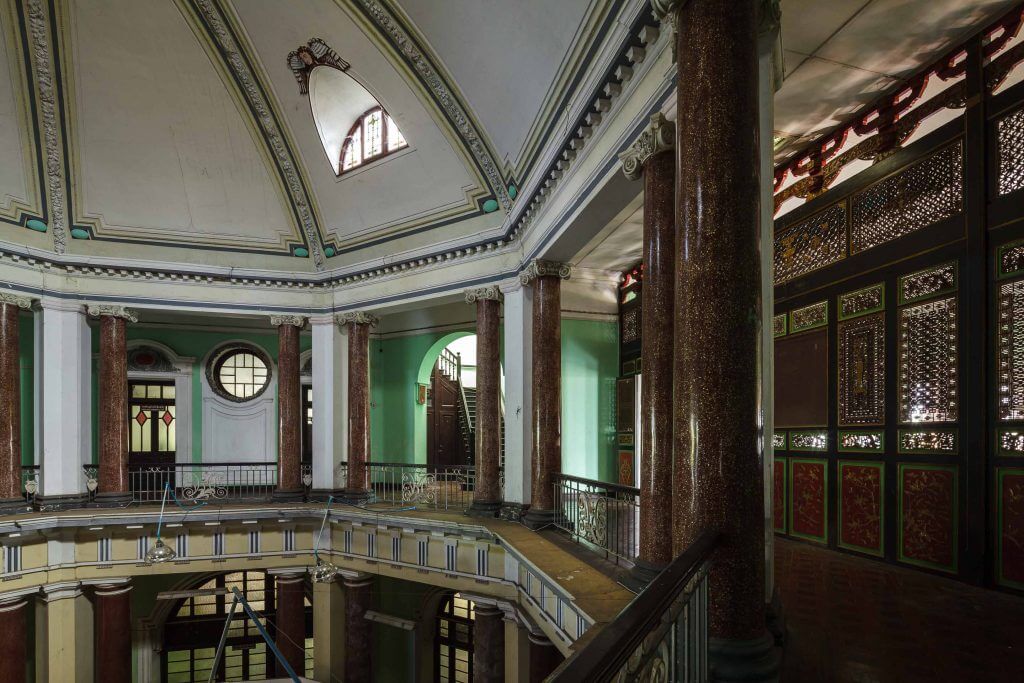
His funeral on 8 November brought out every community in Rangoon. Thousands lined the streets between his palace and the Hokkien cemetery. He was, the Rangoon Gazette wrote, “the most popular resident of Rangoon”, remembered not only for his lavish lifestyle but also for his philanthropy.
After Chin Tsong’s death, his wife continued to live in the palace. Perhaps due to a meagre inheritance from her husband, she lived there in poverty by 1938. The Japanese ran a radio station out of the palace during the war. The building escaped unscathed despite nearby fighting. After independence, the palace was used as a hotel and renamed the Kambawza Palace. It was also used as a ladies’ hostel for students of the Institute of Economics.
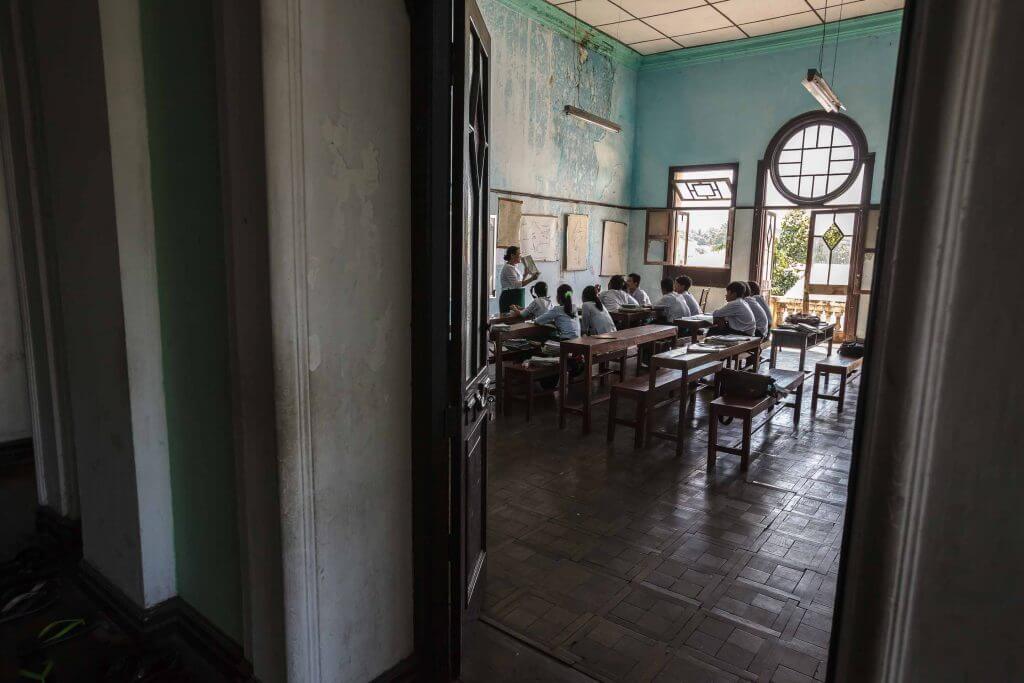
From 1971 to 1974, the commission that drafted the country’s socialist constitution under General Ne Win used the building as its headquarters. This constitution was in force until the 1988 uprisings, then suspended, and the country went without one for 20 years. (The 2008 constitution is the source of huge public debate at the time of writing which, if nothing else, shows the political environment is freer than it has been for some years.)
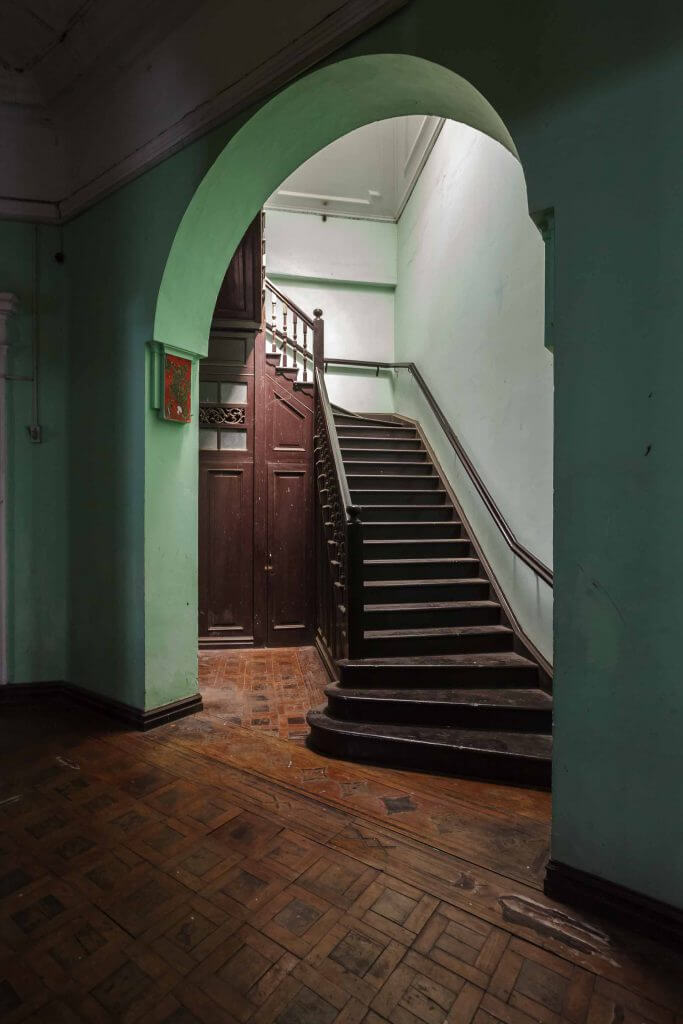
The palace was later repurposed as the Ministry of Culture. The minister’s office was at the top of the tower. Following the government’s move to Naypyidaw in 2005, the State Fine Arts school became the only remaining tenant, leaving much of the building unused and in need of repair. Fortunately, Lim Chin Tsong’s palace received heritage status in September 2014. It is expected to receive a full renovation with government funds. Its heritage status may herald a public use for the building.
Chin Tsong’s legacy is bound up in other iconic buildings around the city. He was a (popular, naturally) alumni of St Paul’s High School, today’s BEHS 6 Botataung. He also owned the Rangoon Turf Club, today’s Kyaikkasan Horse Race Course.
